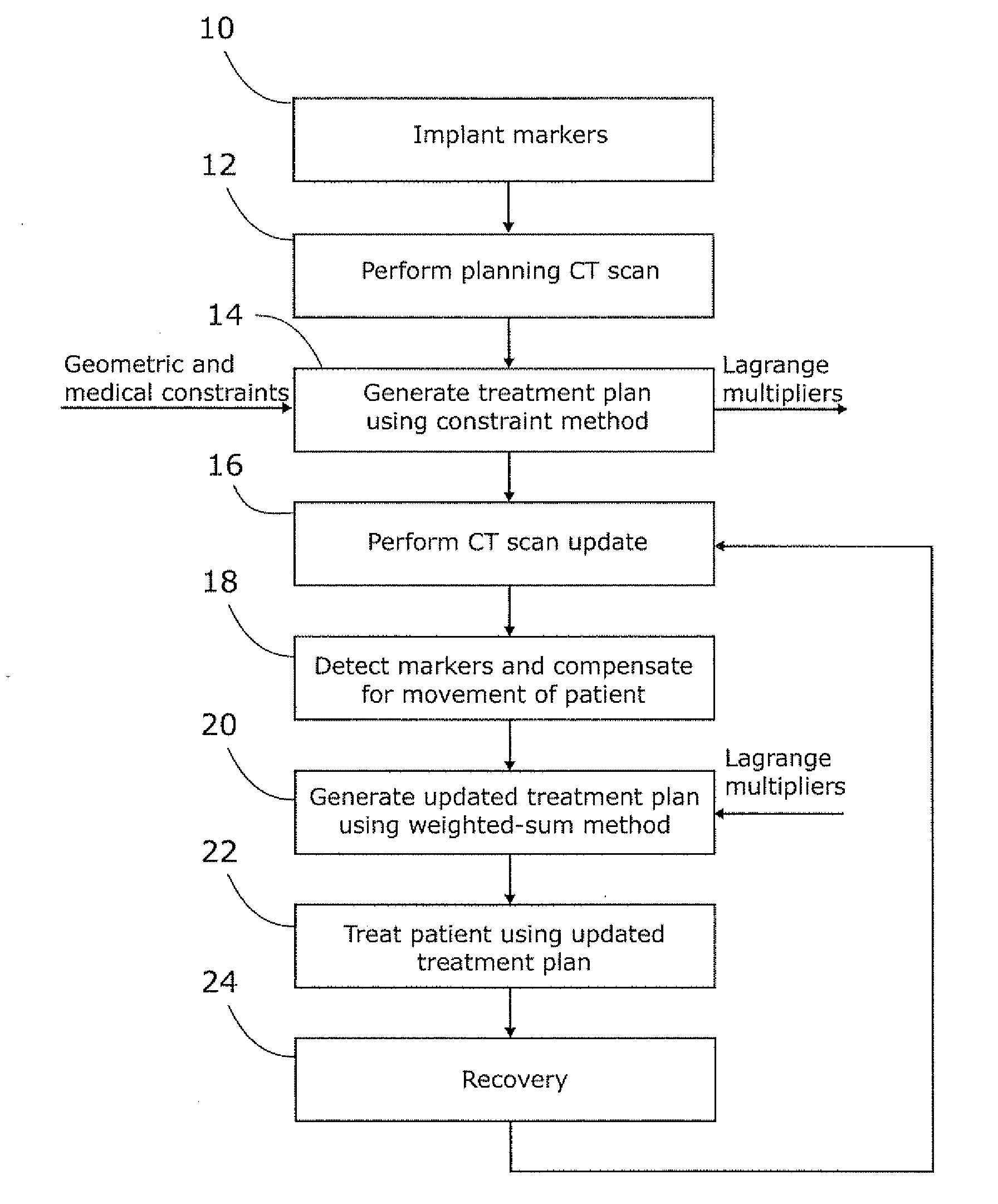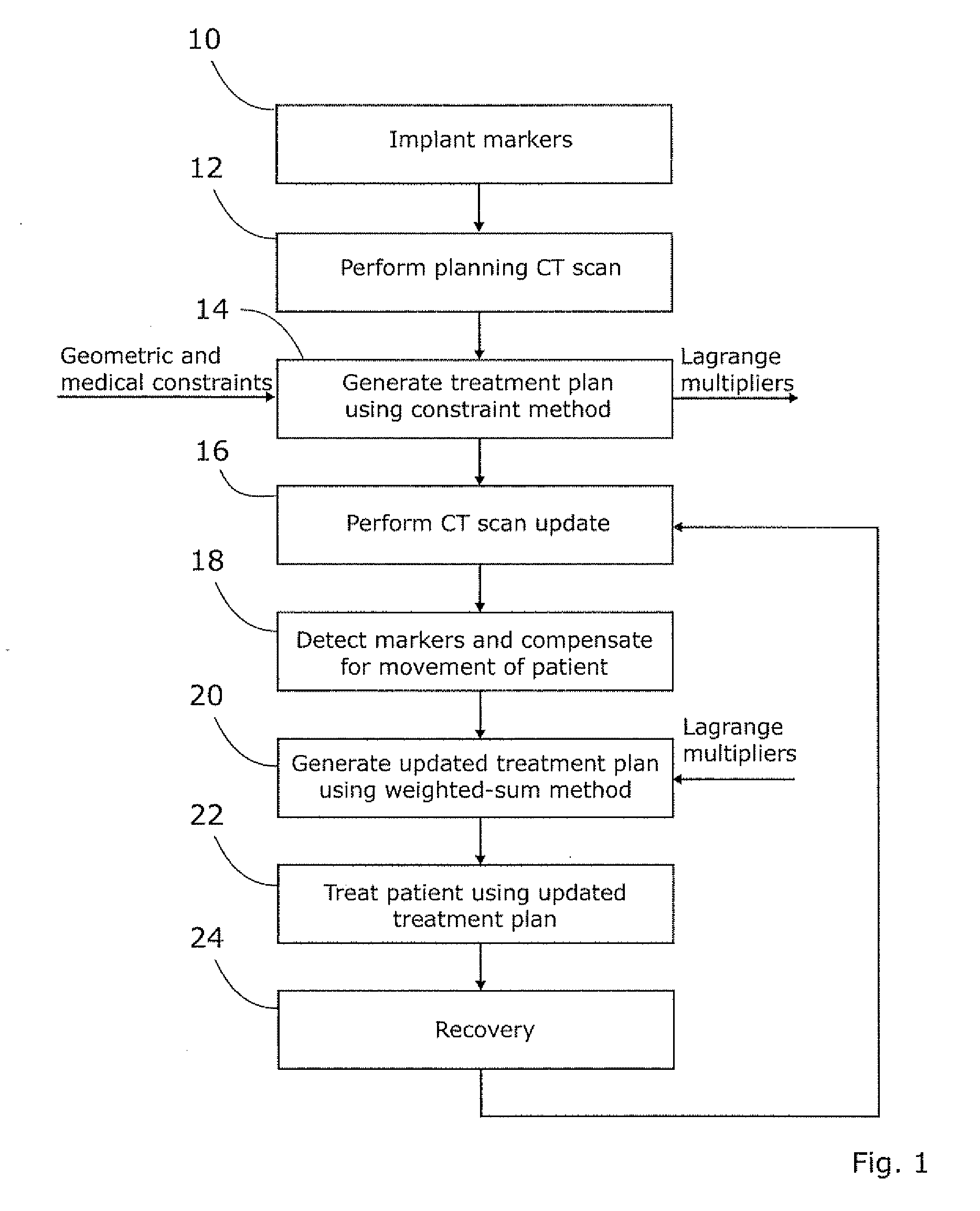Planning for adaptive radiotherapy
a radiotherapy and adaptive technology, applied in radiation therapy, radiation therapy, x-ray/gamma-ray/particle-irradiation therapy, etc., can solve the problems of time-consuming and imposed constraints, and the process (referred to as 2-phase -constraint, or 2pc) is still time-consuming
- Summary
- Abstract
- Description
- Claims
- Application Information
AI Technical Summary
Benefits of technology
Problems solved by technology
Method used
Image
Examples
Embodiment Construction
[0021]Once a physician has input a list of treatment parameters (e.g. targets for which radiation is to be maximised, targets for which radiation is to be minimised, etc), a proposed radiotherapy treatment plan is typically prepared by an automated process. This can then be reviewed by a physician to ensure that it meets the clinical needs of the patient; if necessary the physician can adjust the treatment parameters until an acceptable treatment plan is produced.
[0022]This process uses as one of its inputs a three-dimensional image of the region that will (or may) be irradiated, which has been segmented by manual or automated processes (or some mix of the two) in order to indicate whether a specific part of the image such as a voxel (i.e. a three-dimensional pixel) is either not part of the patient (i.e. free space), part of the tumour or other target to be irradiated, a non-sensitive healthy part of the patient, or a sensitive healthy part of the patient. Target regions are alloca...
PUM
 Login to View More
Login to View More Abstract
Description
Claims
Application Information
 Login to View More
Login to View More - R&D
- Intellectual Property
- Life Sciences
- Materials
- Tech Scout
- Unparalleled Data Quality
- Higher Quality Content
- 60% Fewer Hallucinations
Browse by: Latest US Patents, China's latest patents, Technical Efficacy Thesaurus, Application Domain, Technology Topic, Popular Technical Reports.
© 2025 PatSnap. All rights reserved.Legal|Privacy policy|Modern Slavery Act Transparency Statement|Sitemap|About US| Contact US: help@patsnap.com



